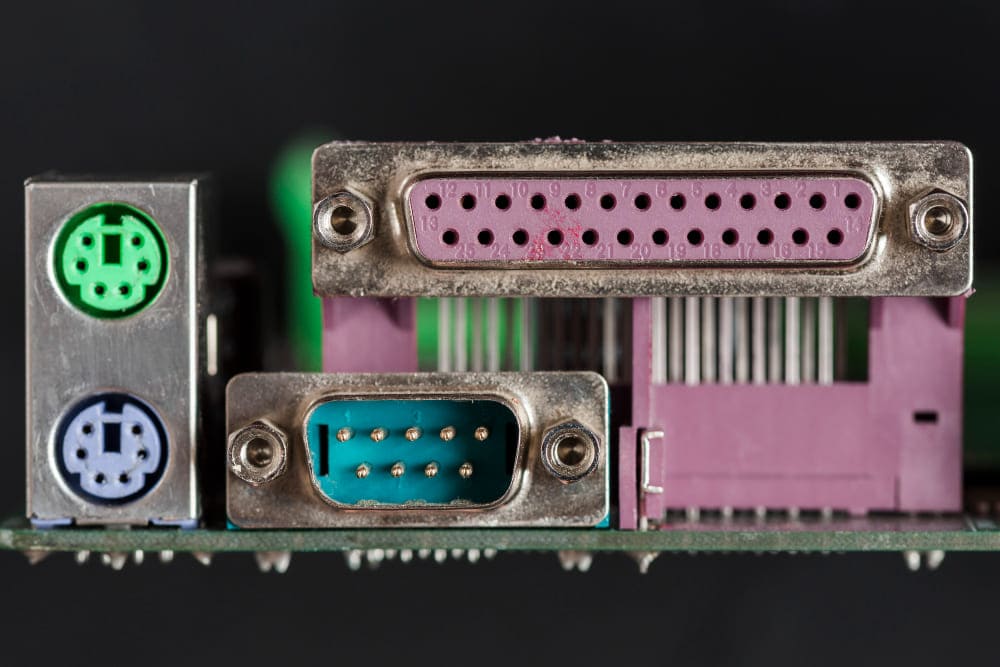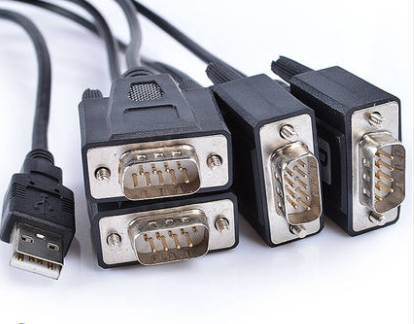Hintergrund Einführung
In control systems with more complex functions, RS232 serial port communication plays a crucial role in facilitating data exchange. The host computer is typically an industrial computer, while the slave computer is a single-chip microcomputer. In these applications, the single-chip computer interfaces directly with the controlled object, allowing for further data collection and analysis to be conducted via a PC.
Data exchange needs to occur between the microcontroller and the PC, and this is accomplished through one or more RS232 serial ports present in the PC configuration. The RS232 standard, established by the American Electronics Industry Association, is designated by the identification number 232, with the “C” indicating the latest modification of the standard.
The RS232C standard interface comprises 25 lines, which include status lines, contact lines, data lines, and ground lines. This article analyzes the application of RS232 serial port communication process between the PC and the microcontroller, highlighting its significance in ensuring reliable data transfer and control system functionality.
Anwendung der seriellen Schnittstelle RS232 für die Kommunikation mit Mikrocontrollern

RS232 serial port communication concept
Das Konzept der seriellen Kommunikation ist sehr einfach. Es kann auf jedem Personal Computer installiert werden. Es handelt sich um eine Standardschnittstelle. Die gängigsten Typen sind DB-9 und DB-25. Es gibt zwei RS232-Schnittstellen auf dem Computer und parallele Kommunikation. Verglichen mit der Geschwindigkeit ist die Sende- und Empfangsgeschwindigkeit der seriellen Kommunikation langsamer, aber sie kann gleichzeitig senden und empfangen, und es kann auch eine Kommunikation über große Entfernungen erreicht werden.
RS232 serial port communication principle
RS232 serial port communication is mainly transmitted through ASCII codes, and the ground wire is used to complete the corresponding reception and transmission. The serial communication end transmits on one line and can then receive on another line. Some of the more important parameters include:
1) Baud rate. It can reflect the speed of communication. The baud rate is the same as the clock cycle. However, it is worth mentioning that the baud rate is inversely proportional to the distance. Only close instruments require a baud rate.
2) Data bits. This parameter can reflect the data in communication. The general standards are 5, 7, and 8 bits. The standard value should be selected depending on what kind of information is sent. The standard ASCII code is 7 or 8 bits. The last bit of a single packet is the stop bit. The data is transmitted through the transmission line during timing, so the devices have different clocks.
During the communication process, the data between the devices The transmission is asynchronous, so the difference is relatively small. At this time, stop bits can be used to resolve the asynchrony between devices. Stop bits can also be used to express the end of the transmission. The more stop bits, the better. It should be increased. Appropriate number of bits to ensure data transfer rate.
3) Paritätsbit. Mit diesem Parameter kann die Korrektheit und Fehlerhaftigkeit der seriellen Kommunikation überprüft werden. Die wichtigsten Methoden sind gerade, ungerade, hoch und niedrig. Bei der Paritätsprüfung ist das letzte Bit der Daten das Prüfbit. Für das Gerät ist es wichtig, die Bedeutung der einzelnen Bits zu kennen. Anhand des Status kann festgestellt werden, ob die Datenübertragung durch andere Geräte gestört wird.
Serielle Kommunikation RS232C Standard
With the continuous advancement of science and technology, communication equipment is used more widely in life. There are many serial communication interface standards, all of which are based on the RS232 interface standard. The earliest RS232 standard was the United States in the 1960s. Promulgated by the company, this standard has certain requirements for the transmission rate, and the standard has certain instructions for the related equipment of the serial communication interface.
At present, this interface has been widely used. The regulations for device characteristics, logic levels and signal line functions are: on RTS, CTS, DTR, DSR and other control lines, if it is 3V-15V, it means the signal is valid; if it is -3V to -15V, it means the signal is valid. If it is disconnected, the signal is invalid. There is no clear indication in RS232C, but there are various types of connectors. The DB-9 connector does not support the 20mA current loop interface and can only be connected to COM1 and COM2 interfaces.
Schnittstellenschaltung zwischen RS232 und Mikrocontroller
Es gibt offensichtliche Unterschiede zwischen dem Signal der seriellen Schnittstelle des Mikrocontrollers und dem von RS232, so dass eine Konvertierung erforderlich ist, um die Pegelkonsistenz zu gewährleisten. Der am weitesten verbreitete Wandler ist MAX232. Seine Hauptstromversorgungsquelle ist die 5-V-Stromversorgung, die leicht zu beschaffen ist. Nach der Konfiguration der Quelle wird das Signal nach der Umwandlung zu TXD, das direkt an den PC angeschlossen werden kann. Nach Recherchen über die Zusammensetzung besteht er hauptsächlich aus drei Teilen.

Die Ladungspumpenschaltung umfasst 4 Kondensatoren und die Stifte 1, 2, 3, 4, 5 und 6, die den kontinuierlichen Betrieb des Pegels gewährleisten können. Der Datenumwandlungskanal umfasst die Stifte 7 bis 14. Der obige Teil von den Stiften 11 bis 14 ist der erste Datenkanal, und von den Stiften 7 bis 10 ist der zweite Datenkanal. Er kann über Pin 10 eingegeben und nach der Umwandlung über Pin 14 ausgegeben werden. Natürlich gibt es auch viele Mängel bei RS232, wie zum Beispiel die unzureichende Übertragungsreichweite. Die Übertragungsdistanz kann im Betrieb nur 50 m betragen, so dass die entsprechenden Anforderungen nicht erfüllt werden können.
Die maximale Übertragungsrate beträgt 19200B, so dass die Geschwindigkeit deutlich reduziert ist. Bei der Übertragung handelt es sich hauptsächlich um die Übertragung über eine gemeinsame Masse. Bei diesem Verfahren kommt es leicht zu Störungen durch andere Faktoren, was die Wirkung beeinträchtigt.
Zusammenfassend
In summary, the application of RS232 serial port communication in the communication between PC and microcontroller is mainly analyzed. It can be seen that RS232 serial port communication plays a very important role in the transmission between microcontroller and PC. It is the main method of information transmission. The hub can complete the transmission of data. Of course, there are also many shortcomings. Researchers need more analysis and practice to find solutions and provide greater help for future work in this area.